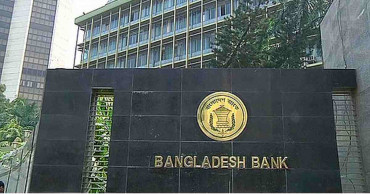forex
Bangladesh's forex reserves reach $20bn amid rise in remittance
Bangladesh's foreign exchange reserves have surged to $20 billion, driven by an increase in remittances from overseas workers.
According to Bangladesh Bank’s spokesperson and Executive Director, Husne Ara Shikha, the current reserve, as of December 22, stands at $24.84 billion (or 2,484 million USD) based on the bank's latest data.
But the reserves are officially recorded at $20 billion in line with the International Monetary Fund's (IMF) BPM-6 accounting methodology.
Bangladesh had to accept huge Rohingyas under certain circumstances: Touhid Hossain
The reserves had reached the $20 billion mark earlier on November 6, but there was a gradual decline following that, with the reserves dipping below $19 billion during the first week of December.
Despite this dip, the inflow of remittances has provided a crucial boost to the national reserves.
During the first 21 days of December, Bangladesh received $2.07 billion in remittances, a significant rise compared to $1.575 billion and $1.572 billion received in October and November, respectively.
DSEX drops by 5.56 points; prices of 130 companies falls during early trading
The growing flow of remittances indicates improved financial support from Bangladesh's diaspora, contributing positively to the country's foreign exchange reserves.
This positive trend in remittances, along with other financial factors, is expected to continue strengthening Bangladesh's foreign exchange position, offering a buffer against global economic challenges.
1 year ago
Bangladesh's useable forex reserves drop to $15.82 billion: Sources
Bangladesh’s foreign exchange reserves continued to fall with the usable reserves standing now at USD $ 15.82 billion as per IMF guideline, according to banking sources familiar with the development on Tuesday (November 28, 2023).
During the period of the COVID-19 pandemic two years ago, the reserves had soared to $48 billion, thanks to greater inflow of remittances amid reduced import demand. The reserves started decreasing since the eased import restrictions and impact of the Russia-Ukraine war.
Also read: Forex reserves below $20 billion after paying ACU
The latest foreign exchange report of Bangladesh Bank (BB) revealed that the country's reserves on 23 November stood at $19.52 billion based on the IMF formula (Balance of Payments and International Investment Position Manual) or BPM6.
As per the formula, the net reserves will be $3.7 billion less than the total reserve amount, the BB sources said.
The BB spokesperson Mezbaul Haque in this regard told UNB that foreign exchange from reserves is spent and deposited every day.
Also read: IMF relaxes forex reserve and revenue targets for $4.70 billion loan
It is a continuous process of a country, he said advising common people not to panic at the news of decreasing foreign exchange.
In July, Bangladesh started calculating its foreign reserves according to a formula suggested by the International Monetary Fund – BPM6.
Following the new calculation, Bangladesh's gross foreign exchange reserves that time dropped by $26.44bn to $23.56bn.
Also read: Bangladesh stands on the edge of deep ditch before the polls: Dr Debapriya
2 years ago
Prime Bank receives $50m from IFC to support trade, forex liquidity needs in Bangladesh
To support export and import-based businesses in coping with global uncertainties induced by the Covid-19 pandemic, International Finance Corporation (IFC) is providing $50 million to Prime Bank Limited in Bangladesh.
This IFC funding will support working capital, trade finance, and foreign exchange liquidity needs of export and import based entities borrowing through Prime Bank’s Offshore Banking unit.
The financing package is part of IFC’s “Fast Track Covid-19 Facility” – a package designed to support countries and private sectors to cope with the impacts of the pandemic under the Working Capital Solutions (WCS) program, according to a media release issued on Monday.
Read More: IFC giving $32.5 million to ensure food security in Bangladesh
IFC has provided a total of $310 million in working capital solutions to banks in Bangladesh and liquidity support to companies since the beginning of the pandemic, including this latest funding to Prime Bank.
Since 2010, IFC has invested over $3.6 billion to help the private sector in Bangladesh grow.This IFC engagement with Prime Bank will also be supported by the International Development Association’s Private Sector Window Blended Finance Facility.
Commercial banks are the largest providers of working capital and foreign exchange trade finance support to manufacturing and infrastructure businesses, key drivers of Bangladesh’s economy.Unexpected turbulence in the global markets has restrained foreign exchange liquidity in the market.
Read More: IFC pledges $6 billion to tackle food insecurity.
With this funding, Prime Bank is expected to extend loans to its export and import-based customers, helping keep businesses afloat, resume exports and preserve jobs.
“IFC’s support reflect resilience of Bangladesh economy and confidence in Prime Bank. IFC has been a valuable partner of Prime Bank since 2014 and this relationship helps us to significantly expand our OBU business. We are really thankful to IFC for its continued support. This fresh funding of USD 50 million targeted for SME clients will help us to grow SME portfolio of the bank,” said Managing Director & CEO of Prime Bank, Hassan O. Rashid.
“It is clear the impacts of Covid-19 are still being felt by a number of businesses in Bangladesh’s key industries, effectively constraining their operating ability,” said Allen Forlemu, Regional Industry Director, Financial Institutions Group, IFC. “This funding package is designed specifically to help ensure businesses in Bangladesh can continue to trade and have access to working capital, helping them maintain operations and preserve jobs. Small and medium-sized businesses, which are the backbone of the country, and have been particularly impacted by the pandemic, are expected to benefit the most from this IFC funding.”
Read More: IFC-led PaCT helped factories cut carbon and water footprints: BGMEA.
2 years ago
After Bangladesh assisted Sri Lanka with $200mn, many countries made similar requests: PM
Prime Minister Sheikh Hasina on Sunday (November 27, 2022) shared that after helping Sri Lanka with a currency swap, many countries communicated with her to get the same kind of assistance from Bangladesh.
“We have assisted Sri Lanka from our (forex) reserve. After that, I have received requests from many countries,” she said.
The prime minister said this while delivering her introductory speech at the Secretaries’ Committee Meeting, held at the PMO.
Read more: No problem with movement, but don’t go for violence: PM Hasina warns BNP
In May 2021, Bangladesh cleared a USD 200 million currency swap for Sri Lanka, to help boost its economy.
It was the first-ever loan to any country from Bangladesh, given under the currency swap agreement inked by Bangladesh Bank and the Central Bank of Sri Lanka, on August 3.
“Many government heads have called me and I have talked to them. I have described to them the ground reality. We are formulating our budget, taking budgetary support from other sources. At this time, it will not be possible for us to give any kind of assistance,” she said.
Read more: ‘Why did Bangladesh not see development in 29 years?’ – PM Hasina asks
She mentioned that it means many countries across the globe are facing forex reserve crisis.
“… We must practice austerity with urgency,” she said.
Read more: Karnaphuli Tunnel first such project in South Asia: PM Hasina
3 years ago
None can chew up forex reserve, it’s for the people: PM Hasina
Prime Minister Sheikh Hasina today (October 27, 2022) said no one can chew up forex reserve.
“Many may wonder where the forex reserve money went. Money from forex reserve went to Payra Port, procuring food for the people, fertiliser, meeting the daily needs of people… No one can chew up that money. That is (forex reserve) for the people. We are using that for import and other necessary purposes,” she said.
Sheikh Hasina said this while inaugurating some development projects, including capital dredging at Payra Port, aiming to equip it with better facilities for smooth operations.
Read: What are the 3 reasons behind Bangladesh’s falling forex reserves?
The Prime Minister virtually inaugurated the development projects from her official residence Ganabhaban.
Other inaugurated projects included eight ships and vessels, the first terminal, construction of a six-lane approach road and a bridge at Payra Port.
The PM said that for the first time, money from Bangladesh Infrastructure Development Fund is being used. It is being used for capital dredging of Payra Port.
Read: IMF loan would help economy gain stability in reserves, dollar market: Experts
“We have provided loan, with minimum interest rate, to the port. With one percent service charge, they will have to give only two percent interest rate,” she said.
The Prime Minister also stressed that the country’s money will remain in Bangladesh. She said that Bangladesh’s forex reserve can be used for infrastructure development. In this connection, she mentioned the hassles Bangladesh has to deal with when taking foreign funds.
“Considering that, we have created a fund – Bangladesh Infrastructure Development Fund. We have created this fund using our forex reserve money. Using that fund, we are starting the dredging of Payra Port,” she said.
Read Payra Port has so far earned revenues worth over Tk 600cr: PM Hasina
Bangladesh’s forex reserves stood at USD 35.98 billion as of October 19, 2022, according to data from Bangladesh Bank. Forex reserves were USD 46.19 billion a year ago (October 19, 2021).
3 years ago
What are the 3 reasons behind Bangladesh’s falling forex reserves?
Despite curbing imports, Bangladesh’s foreign exchange reserve fell to USD 36 billion – the lowest in 28 months – due to 3 reasons, economists believe.
The reasons are an imbalance in export-import, high dependency on imported oil and gas, and decreasing trend in inward remittance flow.
The forex reserves stood at USD 35.98 billion on Wednesday, according to data from Bangladesh Bank. The country’s reserve was USD 46.19 billion a year ago (October 19, 2021).
Read: Forex market may be more volatile unless reforms are done
Former governor of Bangladesh Bank, Dr Salehuddin Ahmed, told UNB, increasing the flow of inward remittance and curtailing import liabilities are ways to secure forex reserves, as exports are facing a slump due to the Russia-Ukraine war.
Despite increasing the cash incentives to 2.5 percent from 2 percent in the current fiscal year (2022-23), the inward flow of remittance saw a fall of 25 percent in September compared to August.
Bangladesh is receiving an average of USD 59.22 million inward remittance per day in the current month through banking channels which was USD 76.66 million in July.
Read: Bangladesh’s forex reserves now $36.90 billion
The fiscal year started with a growth trend of inward remittance while the country received USD 2.09 billion in July and USD 2.03 billion in August. But remittance fell to USD 1.54 billion in September.
Dr Abdur Razzaq, a trade expert and a former researcher of WTO, said overall exports of Bangladesh have declined by 6.25 percent in the last month, mainly due to a decline in apparel exports.
The export of readymade garments was worth USD 3.16 billion in the previous month, which is 7.52 percent lower than in September last year. Export of both woven and knit garments declined last month, he said.
Read Market-based foreign exchange rate may be introduced soon
Exporters of readymade garments have said that inflation in the USA and EU countries has become severe due to the Russia-Ukraine war. People there have cut back on purchases other than fuel and groceries.
Because the foreign buyers have reduced new purchase orders, some companies were not allowing shipment even after the products were ready, sector insiders said.
Higher dependency on importing oil and LNG gas, directly and indirectly, affected the foreign exchange reserves. The foreign exchange payment liabilities have been surging due to increasing oil and gas prices in the global markets.
Read Explainer: What it means to let taka float
3 years ago
Bangladesh’s forex reserves now $36.90 billion
Bangladesh’s forex reserves are now down to USD 36.90 billion, despite the central bank’s move of curbing imports, and currency diversification in foreign trade.
According to the data of Bangladesh Bank, forex reserves on Wednesday (September 21, 2022) stood at USD 36.90 billion, which was USD 37.08 billion last Monday.
In the first week of this month, the reserves fell to USD 37.06 billion as the Asian Clearing Union (ACU) cleared its July-August arrears of USD 1.74 billion. As of August 25 last year, the reserves were USD 48.60 billion. According to that, the reserve has decreased by USD 11.5 billion in one year.
This is happening due to the selling pressure of US dollars for import LCs and the surge of individual demand to meet travel, medical treatment, and tuition fees for foreign universities.
On September 1, 2022, the forex reserves of Bangladesh were USD 39.05 billion.
Bangladesh Bank has been selling dollars from the reserves in continuation of last fiscal year to bring 'stability' to the forex market. In total, the central bank has sold USD 2.57 billion from reserves in two months (July-August) and of the current FY 2022-23.
Former Bangladesh Bank governor Atiur Rahman said that despite the increase in remittance, the forex reserve fell due to the continued sale of dollars.
"There is no problem even if the reserves fall to USD 38 billion in the current global context. Because, with this reserve, it is possible to meet the import expenses of more than six months,” he added.
Also read: Forex reserves below $38 billion despite tightened imports
3 years ago
Bangladesh received over $1 billion remittance in Sep 1-15
Bangladesh received inward remittances worth over USD $1008.67 million (1,000 million = 1 billion) in the first 15 days of September, amid the forex crisis in the country.
Bankers said remittance inflow shows an upward trend as the remitters are encouraged by the depreciation of taka and they get more than Tk 108 per dollar.
The remittance inflow is expected to cross $2 billion in September.
Read: Uniform rate: Tk 108/dollar max for remittance, Tk 99/dollar for export income from tomorrow
Bangladesh received remittances of $2.09 billion in July and $2.03 billion in August, which became a blessing amidst forex crisis.
Md Serajul Islam, executive director and spokesperson of Bangladesh Bank told UNB that the central bank has simplified various processes to attract more remittance through banking channels.
The government is also extending remittance incentives as well as providing policy support. Now the dollar rate is getting higher, he said.
Read: Hope amidst forex crisis: Bangladesh received $2.03bn remittance in Aug
The sector insiders said that Bangladesh’s inward remittance flow will grow more as manpower export hit a new high in the past fiscal on a post-pandemic rebound of the overseas job market.
The data of the Bureau of Manpower Employment and Training (BMET) showed over 9.88 lakh workers had gone abroad in the fiscal year FY22 while this figure was 2.71 lakh in FY 21.
This happens to be the highest number of annual overseas jobs in the last seven years.
Read How to safely send remittance to Bangladesh?
It is also contributing to growing up the inward remittance flow in Bangladesh.
3 years ago
Hope amidst forex crisis: Bangladesh received $2.03bn remittance in Aug
Bangladesh received inward remittance worth USD 2.03 billion in August — raising hope amidst a forex crisis.
In July, the first month of FY 2022-23, migrant workers sent home $2.09 billion remittance, said a Bangladesh Bank report.
The inward remittance flow was $1.87 billion in July and $1.81 billion in August in FY 2021-22.
Also read: Bangladesh receives $2.09 billion remittance in July; highest in 14 months
Bangladesh received $21.03 billion remittance in FY 22, showing a 15 per cent fall from $24.77 billion inward remittance in FY 21. The remittance flow in the first two months of the current fiscal year is providing a glimmer of hope for forex reserve — crucial to meet the growing import demands.
Md Serajul Islam, executive director and spokesperson of Bangladesh Bank, told UNB that the central bank has simplified various processes to attract more remittances through banking channels.
The government is also extending remittance incentives as well as providing policy support. Now the dollar rate is getting higher, he said.
Also read: Banks report $1.72 billion inward remittances till August 25
The sector insiders said that Bangladesh’s inward remittance flow will grow more as manpower export hit a new high in the past fiscal thanks to the post-pandemic rebound of the overseas job market.
The data of the Bureau of Manpower Employment and Training (BMET) showed over 9.88 lakh workers had gone abroad in FY 22 while this figure was 2.71 lakh in FY 21.
This happens to be the highest number of annual overseas jobs in the last seven years.
Read How to safely send remittance to Bangladesh?
Officials hope the outflow of workers would increase in the current fiscal year as Malaysia is going to restart hiring manpower from the country, following a negotiated deal.
The statistics showed that a low number of 271,445 workers found jobs in FY 21 during the peak pandemic while 498,983 in FY 20, 659,044 in FY 19, 866,417 in FY 18, 893,736 in FY 17, and 672,721 in FY 16.
3 years ago
BB sets cost ceiling for short-term trade finance in forex
Bangladesh Bank (BB) has set the all-in-cost ceiling for short-term trade finance in foreign exchange.
A BB circular stated that all-in-cost will include the entire cost of a financial transaction, business operation, taxes and fees such as closing costs, origination fees, or commissions.
The foreign exchange policy department of BB issued a circular in this regard and sent to the Authorized Dealers (ADs) of foreign exchange in Bangladesh on Tuesday for immediate execution.
The circular said that given the global market trends, it has been decided to set an all-in-cost ceiling per annum with a mark-up of 3 per cent over benchmark rate applicable to the relevant currency against short-term trade finance.
As usual, banks will continue to arrange finance with LIBOR as the benchmark rate till its usability is ceased, the notification said.
Read: BB increases interest rate on borrowing from EDF
The LIBOR (London Interbank Offer Rate) is a benchmark interest rate at which global banks lend to one another in the international interbank market for short-term loans. It acts as a benchmark for short-term interest rates. It is used for pricing interest rate swaps, currency rate swaps as well as mortgages.
3 years ago

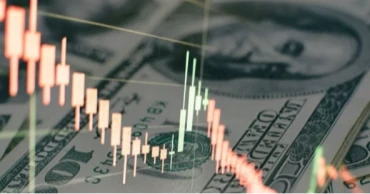
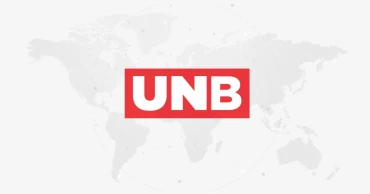
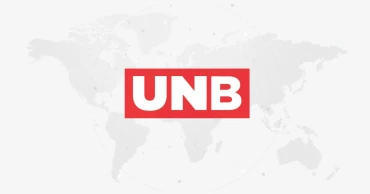
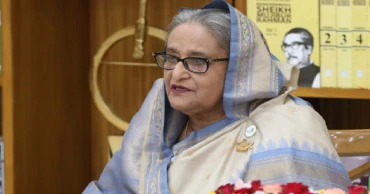
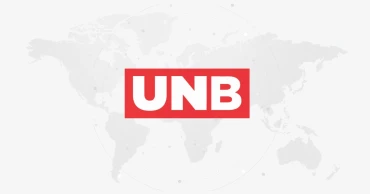
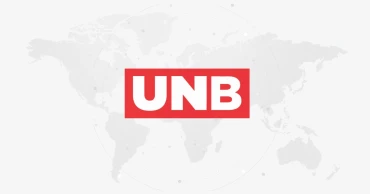
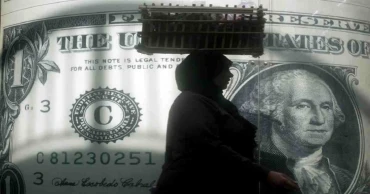
.jpg)
